- Administrator
- Albums and Singles
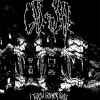 Greh of Hive Mind and Mike Connelly of Hair Police and Wolf Eyes have released a monster of a record that collects two previously limited cassette releases with a new 38 minute opus dedicated to dysfunctional machinery of all kinds.
Greh of Hive Mind and Mike Connelly of Hair Police and Wolf Eyes have released a monster of a record that collects two previously limited cassette releases with a new 38 minute opus dedicated to dysfunctional machinery of all kinds.
PACrec
The satanic imagery and advertised promise of "black noise" might suggest some seriously raw material, but it's the older releases that really make I Turn Black Keys shine. The title track—and first on the album—is pure distorted madness punished and shaped into various forms. There's not a whole lot on the track that suggests much beyond the standard harsh noise fare: bleeding static, roughed up rhythmic bursts, low-level bass frequencies accentuated by sudden freak punches of sound, and stuttering white noise are all intertwined and thrown about like a rag doll for close to forty minutes. What I've heard from Hive Mind has never suggested a density like this, so it's interesting to hear Greh working in this context. It's certainly not the best thing he's been involved with, but the piece does move by quickly, varying enough to keep the entire track interesting and fun. It's the next four tracks that tickle my fancy, however.
Both "Bane" and "House with the Clock in its Walls" revel in the promise of space and vacancy. Instead of flooding the aural spectrum with gargantuan walls and maniacal bulldozers, Greh and Connelly bounce analogue sounds throughout the stereo, imitating some cosmic comedy that goes severely awry, ending with earth shattering quakes and deep shrieks worthy of death metal's finest moments. These two tracks remind me most of what I liked about Hair Police on "Obedience Cuts." There's no narrative running through the music, just unhinged anger, aggression, and radical twists in style and substance. When the first part of "Bane" ends and electric saws begin cutting through the flesh and muscle of various limbs, the scream that's buried in the mix only serves to intensify the feeling that some snuff film was used in the recording of this song. The second half of "Bane" is even more punishing, the pulverizing jackhammer that forms its non-rhythm evolves into a hypnotic pulse, saturating any sense of bodily involvement and moving the entire piece onto a level of pure mental stress. "House with the Clock in its Walls" ends the disc on a very high note. The beautifully vast array of strange noises that occupy this two-part orgy shame many noise recording artists and cast Gate to Gate in an entirely new light.
While much of the disc might seem a dedication to Satan and his majestic ability to destroy, the final moments of I Turn Black Keys is somehow soothing. Not that I'd ever sleep to the record, but after nearly 60 minutes of pure, rich, black vomit, this sounds absolutely spaced out and almost peaceful. Psychedelic animation might be the single greatest strength in noise's arsenal and that strength is especially demonstrated here.
samples:
Read More
- Administrator
- Albums and Singles
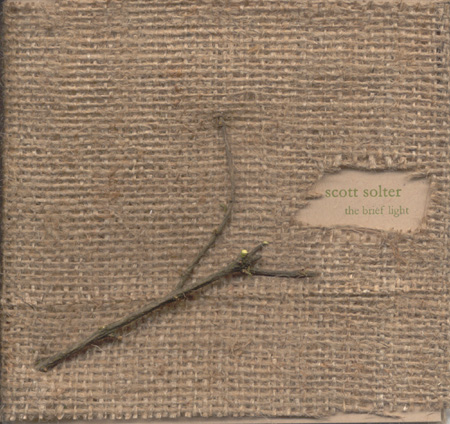 Adding to my theory that producers shouldn't write and release records of their own is this gem of an "ethnic" electronic record. Scott Solter is a name some might identify with Spoon, Court and Spark, or Tarentel, but don't let their better records fools you: The Brief Light is a mess of an album with few strengths to speak of.
Adding to my theory that producers shouldn't write and release records of their own is this gem of an "ethnic" electronic record. Scott Solter is a name some might identify with Spoon, Court and Spark, or Tarentel, but don't let their better records fools you: The Brief Light is a mess of an album with few strengths to speak of.In order to be clear, I should re-emphasize how much I hate records that try to sound "ethnic," like they were born and raised in Malaysia or Africa and obviously have enough knowledge to write an album that fuses the musical styles from those regions with our own. In fact, most of these people have probably only heard a Deep Forest record or two and think they can get away with stealing their ideas and reformatting them. Solter, on the other hand, thinks that a mindlessly arranged record of exotic instruments is enough to carry an album without sinking it beneath the weight of its own fraudulence. There's more dub music in The Brief Light than anything else, but instead of emphasizing the bass all the time, Solter adds keyboard flourishes and guitar rolls worthy of the worst new age compilations featuring John Tesh and Yanni.
The sounds are all amazingly well mixed and produced, vibrantly clear and astoundingly rich, it's just that their arrangement sucks and the mood they create reminds me more of an exhibit at a cheap zoo than of a rain forest or an exotic locale filled with strange sounds and music. John Lomax might've spoiled me with his field recordings and a string of "world" albums released in field recording format (that is, the album really is a recording of natives performing their distinct music) opened my eyes to how exotic music can be, so fodder like this just upsets me and reminds me that there are still hippies out there obsessed with chilling out to the latest wank from some guys who think wooden drums are cool and that Casio keyboards sound great with them.
There are a few bands that have successfully used ethnic music to their advantage and made something beautiful with it (go check out Black Ox Orkestar and their klezmer music for an example of how to do it right), but Solter has only reinforced my belief that it's just about impossible to do without sounding cheesy. I do, however, like the way the album was packaged. It's the same price as any jewel case release but it's housed in a very pretty weave that unfolds to reveal the track listing and individuals involved in the making of the record. If only the group had a coherent idea of what to do with their exotic sound palette, then maybe the music would have been as quality as the packaging and I could stop getting angry over people raping the idea of "exotic" and "ethnic" music.
samples:
Read More
- Administrator
- Albums and Singles
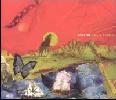 Bellini appeared to have stumbled out of a time machine. Their barbedguitar hooks, thumping rhythm section, and obtuse lyricism seemstrangely out of place in 2005. One listen through songs like “RoomNumber Five” and “The Buffalo Song” make things remarkably clear:Bellini belong in 1993.
Bellini appeared to have stumbled out of a time machine. Their barbedguitar hooks, thumping rhythm section, and obtuse lyricism seemstrangely out of place in 2005. One listen through songs like “RoomNumber Five” and “The Buffalo Song” make things remarkably clear:Bellini belong in 1993.Temporary Residence Limited
Though I don’t mean this in a patronizing way, it’s hard to argue withit after one listen through their second release, Small Stones. Overthe course of ten songs, the band pumps out a series of pick-scrapedriffs and thrusting drums that would make any crusty college radio jockhappy. The obvious touchstones are on proud display on Small Stones;Slint, The Jesus Lizard, Circus Lupus. All of this adds up to an albumthat, though not quite the remarkable accomplishment it could be, is anassured and rugged set of songs. A lot of the credit needs to go toguitarist Agostino Tilotta, who knows how to write jagged riffs thataren’t lacking in melody. On songs like “Smiling Fear,” his guitarplaying is anchored in place by the solid time keeping of drummerAlexis Fleisig (a name you might recognize as the drummer from GirlsAgainst Boys) and bassist Matthew Taylor. Over top of all this, singerGiovanna Cacciola moans out vague lines. Cacciola is the other linchpinon this album, her voice wavers from a soft coo to an assertive holler,all delivered in her deep and accented voice. Elsewhere, songs like“Raymond” crawls along a spiny guitar part and slow drum fills as thetensions slowly builds to a climax. While Bellini aren’t radicallychanging the way guitar rock is made or heard in 2005, Small Stonesexudes such confidence and swagger that it can’t help but not beignored.
samples:
Read More
- Administrator
- Albums and Singles
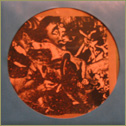 Thosewho have had the pleasure of seeing Wolf Eyes live know that someof their on-stage announcements can be a littlemore on the Bill & Ted side rather than the sort of vitriolichate expected from a trio jamming nasty freeform noiseshit. With their past releases ranging from the blackest of black noiseto stiletto drones it was only a matter of time before they addeda disc of spoken word rambling/stand-up comedy/on-stagenonsense to their catalogue.
Thosewho have had the pleasure of seeing Wolf Eyes live know that someof their on-stage announcements can be a littlemore on the Bill & Ted side rather than the sort of vitriolichate expected from a trio jamming nasty freeform noiseshit. With their past releases ranging from the blackest of black noiseto stiletto drones it was only a matter of time before they addeda disc of spoken word rambling/stand-up comedy/on-stagenonsense to their catalogue.American Tapes
With more than a few noise lovers falling happily into the stereotypeof obsession with things all dark and serial-killerish this release islikely to rub many Wolf Eyes fans up the wrong way; lucky then thatthis is a limited spray painted CD-R edition of only 18 copies. Liveat Banfields East sounds like the contents of a dictaphone that thelocal stoner left in the corner of a noisy bar than a collection withany real form or structure. This is a lo-fi, chaotic and scrambledcollection of recent on-stage shouting that catches wandering trains ofthought, strange monologues, hurled abuse, befuddled hilarity and someclassic one liners (“A word of advice...never ask a guy wearing an EvilDead t-shirt if you can see his gun”). The closest this gets to anykind of Rollins style Spoken Word is Olson's (I think) thoughts on StarWars and Canada and if it sounds thrown together, it’s probably becauseit was. As it’s recorded in a typically lo-fi style it’s oftendifficult to tell what the hell is going on and who is shouting what atwhom, but for all that there are definitely laugh out loud moments.But, as with anything that roots itself in comedy, this release's daysare numbered from that very first listen.
samples:
Read More
- Administrator
- Albums and Singles
We are now offering a standard $1 per 1000 page impressions, this seems to be an industry standard, so sponsors can choose what fits into their budget. Our sponsorship ad size is 600x60 pixels and there's only ever one sponsorship per page load.
Contact us for more information as traffic and clickthrough rates tend to fluctuate.
Thank you for your support and interest.
Read More
- Staff
- Albums and Singles
We are now offering a standard $1 per 1000 page impressions, this seems to be an industry standard, so sponsors can choose what fits into their budget. Our sponsorship ad size is 600x60 pixels and there's only ever one sponsorship per page load.
Contact us for more information as traffic and clickthrough rates tend to fluctuate.
Thank you for your support and interest.
Read More
- Administrator
- Albums and Singles
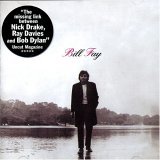 Eclectic Discs' superlative reissues of Bill Fay's pair of classic1970s LPs are well-timed, appearing at the crest a few years of slowlybuilding buzz around this most arcane of British singer-songwriters.
Eclectic Discs' superlative reissues of Bill Fay's pair of classic1970s LPs are well-timed, appearing at the crest a few years of slowlybuilding buzz around this most arcane of British singer-songwriters.
Eclectic Discs
The two albums were briefly available together on one CD from See ForMiles, but quickly went out of print when the label folded. Last year,Wooden Hill/Tenth Planet records issued From the Bottom of an Old Grandfather Clock,a disc of previously unheard demos and alternate mixes from Fay's earlysessions. Jim O'Rourke and Wilco paid homage to "Britain's popSalinger" by recording a version of "Be Not So Fearful," after whichDavid Late Tibet of Current 93 jumped into the fray, issuing thenever-before-released third album Tomorrow, Tomorrow and Tomorrow,recorded in the late 70s by the Bill Fay Group, on Durtro/JnanaRecords, and covering Fay's apocalyptic miniature symphony "Time of theLast Persecution" at subsequent shows and on a limited 7". And throughall of this renewed interest in the artist, the two legendary albumsthat started it all - Bill Fay (1970) and Time of the Last Persecution(1971) - could only be heard by those with enough cash to fork over forrare copies of the original Deram LPs or the extremely scarce See ForMiles CD. So Eclectic have done a solid for Bill Fay fans the worldover by releasing this nice pair of reissues, which contain remasteredversions of both LPs with original artwork and liner notes, as well asnew liner notes written by Fay himself. I've already raved about thesealbums a couple times before (here and here),so I'll try not to replicate those comments, and instead just offersome remarks about these reissues, and why I think Bill Fay stands outamong his other, more established peers.
When I first heard Bill Fay, I was struck by whatsounded like an unresolvable duality; two competing interests thatthreatened to pull me in two different directions. On the one hand wasFay's voice, a raspy, world-weary voice instrument that has beenrightly compared to Nick Drake, Ray Davies and Bob Dylan, singingexistential lyrics full of stoned introspection and spiritual yearning.On the other hand were the arrangements, big overblown saccharinestring swells with ludicrous saxophone solos and orchestral crescendosthat would make even the most MOR adult-contemporary artist blush.Paradoxically, this juxtaposition made Fay's intensely personal lyricsseem even more heartbreaking, as the singer sounded set adrift in aworld that he couldn't possibly comprehend. I'm a sucker for greatalbum openers, and Bill Fay opens with one of the best I've heard,"Garden Song," in which the artist attempts to integrate himself withnature, and sings of a desire to be cleansed and reborn. It's thisspiritual yearning that forms the overarching concept of Bill Fay'strilogy of albums, with the debut representing the first foot set onthe path to salvation, Persecution with its dark prognostications of apocalypse, and Tomorrowwith its glorious ascension into heaven. Though the first album isexcellent in its own right, it's very interesting when compared to itsmore mature and better-produced successor, which backed off on thesyrupy string arrangements, and added psychedelic fuzz guitar andmoments of cataclysmic free jazz into the mix. It could be argued thatBill Fay's first album was the result of a glorious miscalculation, aproducer who wasn't paying attention to the songwriting, and thuscreated Scott Walker-esque arrangements that were wholly inappropriate,but somehow magically work anyway. Eclectic Discs' reissue is nearlyperfect, with great sound and packaging, as well as the addition ofFay's sought after early 45rpm single "Some Good Advice/Screams in theEars," a fantastic double-dose of mannered British psych-pop that worksas a palate-cleanser after the weighty song cycle that precedes it.
samples:
And then there is Time of the Last Persecution, a conceptalbum inspired by a 19th-century ministerial commentary on the Book ofRevelations, and the most intense musical works of apocalyptic exegesisoutside the discography of Current 93. Its intensity is due not only tofrightening lyrics ("It is the time of the Anti-Christ...he will askfor his feet to be kissed by your sister"), but also the uniquearrangements featuring the guitar of Ray Russell and a small hornsection, which frequently rises to a chaotic din as a counterpoint toFay's world-weary prophesying. This album is often romanticallydescribed as the product of drug burnout, as the difference between theclean-shaven, happy "teddy boy" on the debut LP cover, and the shaggy,longhaired, bearded Bill Fay in the midst of spiritual or psychedelicmalaise on the Persecution sleeve is quite shocking indeed. Tracks like"Don't Let My Marigolds Die" and "Come A Day" do little to dissuadelisteners of the notion that this album was recorded deep in some sortof spiritual crisis. Eclectic's reissue includes new liner notes byBill Fay, describing the process of conceiving and recording the album,as well as the reasons for his total disappearance from recorded musicfor the next 35 years. Also included are the original liner notes,which trace Fay's modernist, T.S. Eliot-style take on ancient endtimesprophecy, in a long prose-poem that I found brilliant. It's really agood thing to have this album and its predecessor back in print, and Ihold out some faint hope that their reissue will perhaps occasion alive performance by Fay at some point in the near future. At least, Ihope he gets to it before the Rapture comes.
samples:Read More
- Administrator
- Albums and Singles
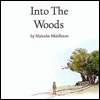 “Break My Heart,” the first track of Malcom Middleton’s second solorelease, declares that the singer “don’t want to sing these shit songsanymore.” A jaunty, mid-tempo number which features Middleton’sself-effacing lyrics and is delivered in his thick Scottish accent, itis anything but a “shit song.”
“Break My Heart,” the first track of Malcom Middleton’s second solorelease, declares that the singer “don’t want to sing these shit songsanymore.” A jaunty, mid-tempo number which features Middleton’sself-effacing lyrics and is delivered in his thick Scottish accent, itis anything but a “shit song.”Chemikal Underground
While there are a few singer-songwriter indulgences that coursethroughout Into the Woods, Middleton manages to steer the album awayfrom cliché and provide a pretty and compelling set of songs. Fans ofArab Strap (of whom Middleton is a member) will no doubt be familiarwith the mordant tone of the lyrics, but where musically Arab Straphave a tendency to render themselves a bit lifeless, Middleton does anexcellent job of varying his songs. This is clearly seen on “No ModestBear,” which bounces along a thick synthesizer riff and roboticdrumming. Elsewhere, songs like the six minute “Bear With Me” recallthe spirit and smart pop of early 80s R.E.M. Perhaps the mostsurprising inclusion is “A Happy Medium,” a sprightly synth-pop piecewhich features ringing guitars and clicking percussion. Over theseseemingly innocuous parts, Middleton intones “Woke up again today,realized I hate myself. My face is a disease.” While it would be easyfor lines like this to slip into self-parody, Middleton keeps thingstogether by not applying any needless melodrama to the lyrics. Whilethere are several songs here that indeed fall into the category of“singer-songwriter,” they do better then most by emphasizing pretty,but subdued melodies and Middleton’s articulate self-loathing. Into theWoods is an album that should appeal to Arab Strap's preexisting fans,but by way of his more wide-reaching experiments in bedroom pop,Middleton could very well acquire a whole new legion of fans attractedto his deft ear for melody and his knack for dark, self-effacinglyricism.
samples:
Read More
- Administrator
- Albums and Singles
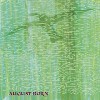 Thisalbum is the transatlantic collaboration between Ben Chansy (Comets onFire, Current 93 and solo as Six Organs of Admittance) and HiroyukiUsui (Ghost, Fushitsusha, and solo as L) and it is based on theproposition that artists, even ones separated by the largest ocean inthe world, can endlessly inspire one another.Drag City
Thisalbum is the transatlantic collaboration between Ben Chansy (Comets onFire, Current 93 and solo as Six Organs of Admittance) and HiroyukiUsui (Ghost, Fushitsusha, and solo as L) and it is based on theproposition that artists, even ones separated by the largest ocean inthe world, can endlessly inspire one another.Drag CityIt's not a new gambit, but it runs the risk of sounding like the forcedcompression of musical ideas rather than the marriage of them. Thealbum begins with three shorter pieces which sound largely scrappedtogether, most likely because they are indeed created out of littlescraps of guitar, field recordings, and other minor instruments. Thesound of the air-mail postage can almost be heard being applied to thepackage in which the musicians sent the CD-Rs. After listening to theintroductive three songs, I can't help but feel that they pale slightlyto the more ruminative pieces on the album. Part of the power of bothartists is their ability to assault listeners with an interminablemixture of sounds both soothing and searing. The repetition of thesesounds seems to draw the more searing sounds to the side of soothing.Don't ask what the chemical reaction or physical phenomenon is whichallows such an attraction. It just happens. But the prerequisite isexposure and length. The songs on the album which lack the prerequisitefail, expectedly. "More Dead Bird Blues" (the motif of death and birdsis consummately alive on the album; seven songs contain some referenceto death or avian creatures) is the first of such ruminative pieceswhich, at first listen, I would not consider wholly melodic orpleasing. The drony and windswept incantations of the first threeminutes eventually give way to chimes and guitar and before you know itthe song has metamorphosed entirely. After a few listens, the song hasa transformative power, both in its suggestions and its aftermath. Someof the songs are more immediately gripping with their elegance, such as"Last Breath of the Bird" and "Providence." The former has a beautifulguitar line underwritten by gentle feedback and brushed percussion. Thelatter is a more crystalline guitar dirge with Hiroyuki's talking (itcan't really be called singing here) punctuating the song. "A Lot LikeYou" is as mystical as Ben Chasny has gotten recently and recalls theearlier Six Organs stuff, but perhaps the most Organistic track on thisalbum is "Bird & Sun & Clay," if only because it is the onesong which prominently features Chasny's vocals. The album concludeswith the short outro of "You Will Be Warm," a simple and delicateepilogue which, as a short yet transfixing song, is the exception thatproves the axiom above. Moreover, the song helps the album end morepleasurably than it began.
samples:
Read More
- Administrator
- Albums and Singles
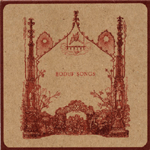 Mat Sweet is the primary musician behind every band on the Blue Baby Recordings label, a label that he is also the founder and principle head of. As Jonathan Dean mentioned in the final issue of the Brain, Sweet has a battery of talents that spread across musical styles both diverse and exploratory. Boduf Songs is the demo Sweet recorded and sent to Kranky, hoping to facilitate a relationship that might involve future albums. Thankfully Kranky was stopped dead in their tracks by this demo and released it as is.
Mat Sweet is the primary musician behind every band on the Blue Baby Recordings label, a label that he is also the founder and principle head of. As Jonathan Dean mentioned in the final issue of the Brain, Sweet has a battery of talents that spread across musical styles both diverse and exploratory. Boduf Songs is the demo Sweet recorded and sent to Kranky, hoping to facilitate a relationship that might involve future albums. Thankfully Kranky was stopped dead in their tracks by this demo and released it as is.
This nine-track, roughly half-hour pestilence of disguised horrors and nervous tension is about as close to arcane as a musician can be without fully diverging the measure of their madness. While Sweet's other projects range from gloomy metal to sound artifacts stretched across the face of H.P. Lovecraft's grave, Boduf Songs is a deceptively bright arrangement of suggestive colors, all of which point away from the disease and corruption that rides just under his folk impressionism. The opening piece begins much like Skinny Puppy's "Love in Vein;" a succession of reversed strings slide gracefully towards their origin and in every way mark the path forward with anticipation. The comparison is useful because Sweet likes to sound welcoming, but also named this opener "Puke a Pitch Black Rainbow to the Sun." His sometimes dense writing combines gently plucked guitar with the uneasy whir of distant explosions and abrupt interruptions. He uses what can't be heard and what can't be seen to his advantage. His words often sink into the music only to revel in key clearings: words like "slaughter" and "bones" or "trembling" stand out among a slur of words that might otherwise hint at innocence and good fun. "This One Is Cursed" is especially haunting, the use of this technique, perhaps unintentional, makes the lovely melody Sweet uses all the more sickening and absurd in the face of the album's other, more clandestine contents. Aside from his skillful and cunning manipulation of mood and setting, Sweet's compositions are outright beautiful. "Grains" and especially "Ape Thanks Lamb" rely on good songwriting and little else. It's an added benefit that they also burn and spirit away with all the decorations of Sweet's ambivalence. The sweep of stringed instruments (is it a cello or modified violin?) and the swell of their deep bodies fill the album with a grandeur not heard in other acts rediscovering the deep and sweeping beauty of folk-related music. Where others might try to go strictly psychedelic and experimental with an old style, Sweet updates it and makes it his own without straying too far from its inherent attractiveness. He is picturesque and pastoral, using little more than his voice and guitar to create a vivid picture of the world around him. Only Sweet sees a world populated by very dark happenings and very dreadful ideas, all swirling, massing, and waiting to descend on the world.
samples:
Read More
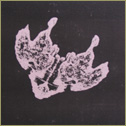 This beautifully-packaged limited edition CD-R sees Finland's A Way pitch four tracks against a single twenty-minute Jazzfinger epic. It's an evolutionary fact that even the collaborative spirit of split CD-Rs still leaves the listener with a winner and a loser; someone's going to end up being the b-side.
This beautifully-packaged limited edition CD-R sees Finland's A Way pitch four tracks against a single twenty-minute Jazzfinger epic. It's an evolutionary fact that even the collaborative spirit of split CD-Rs still leaves the listener with a winner and a loser; someone's going to end up being the b-side.
